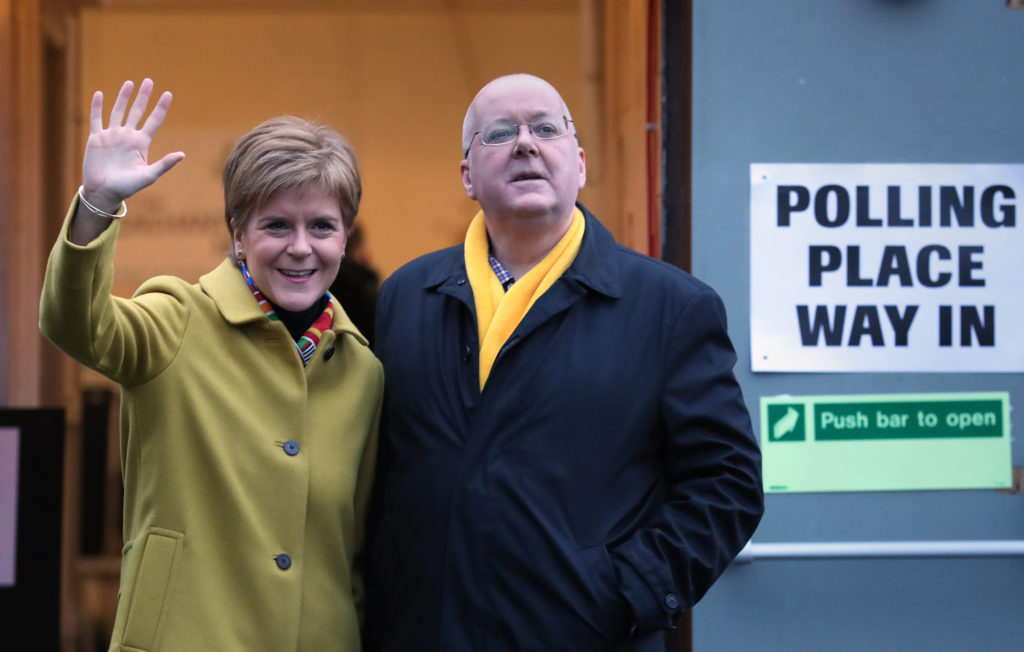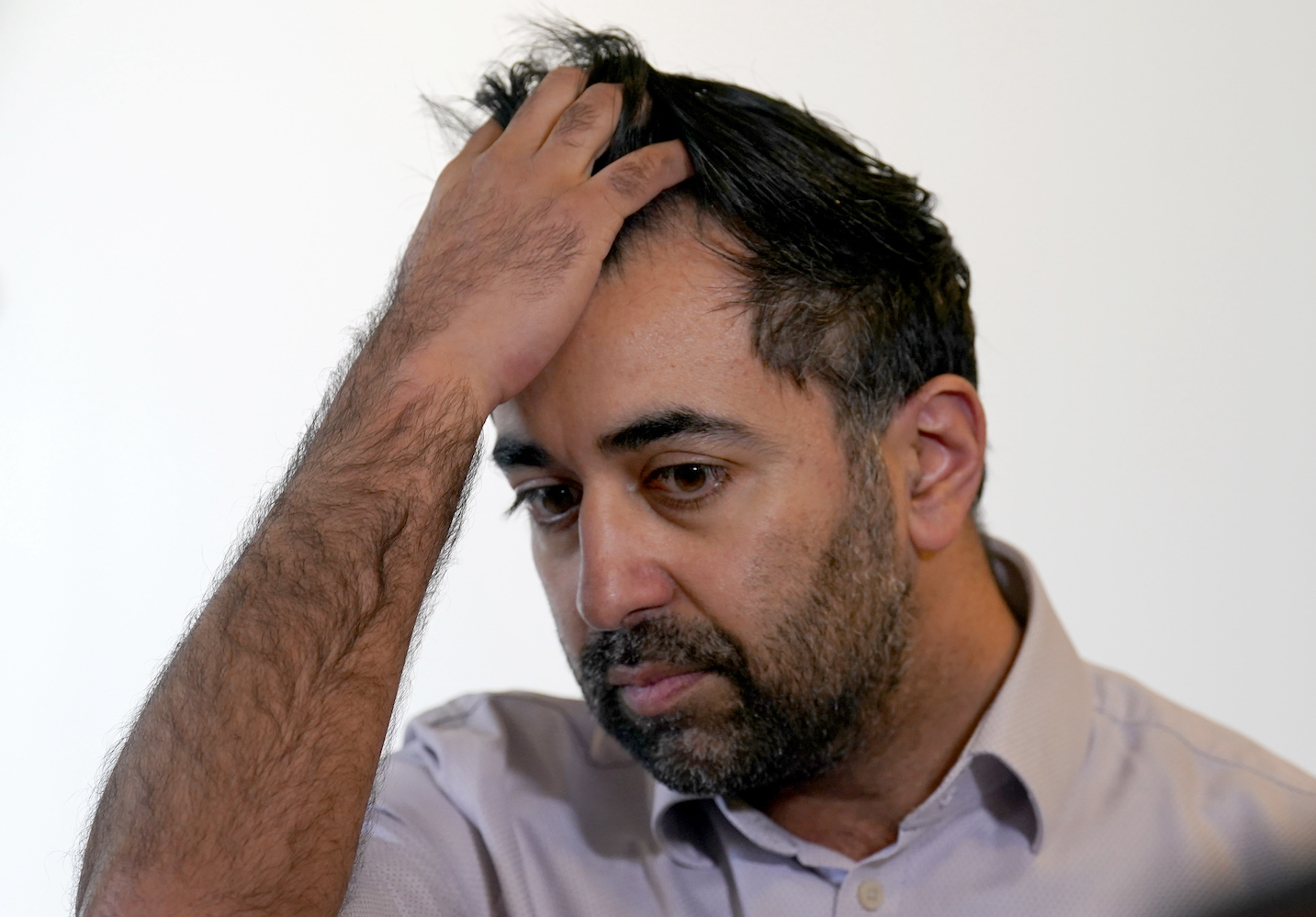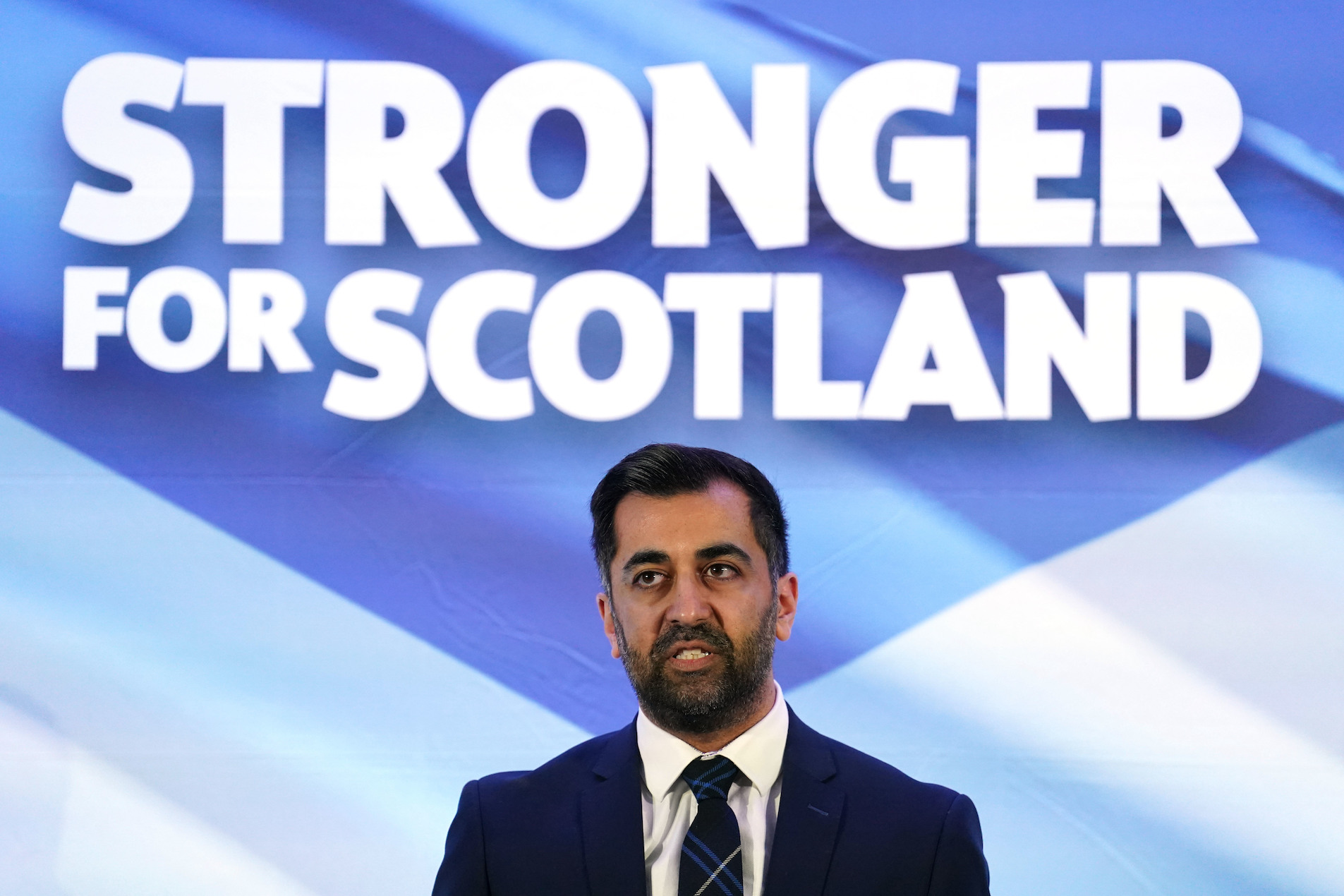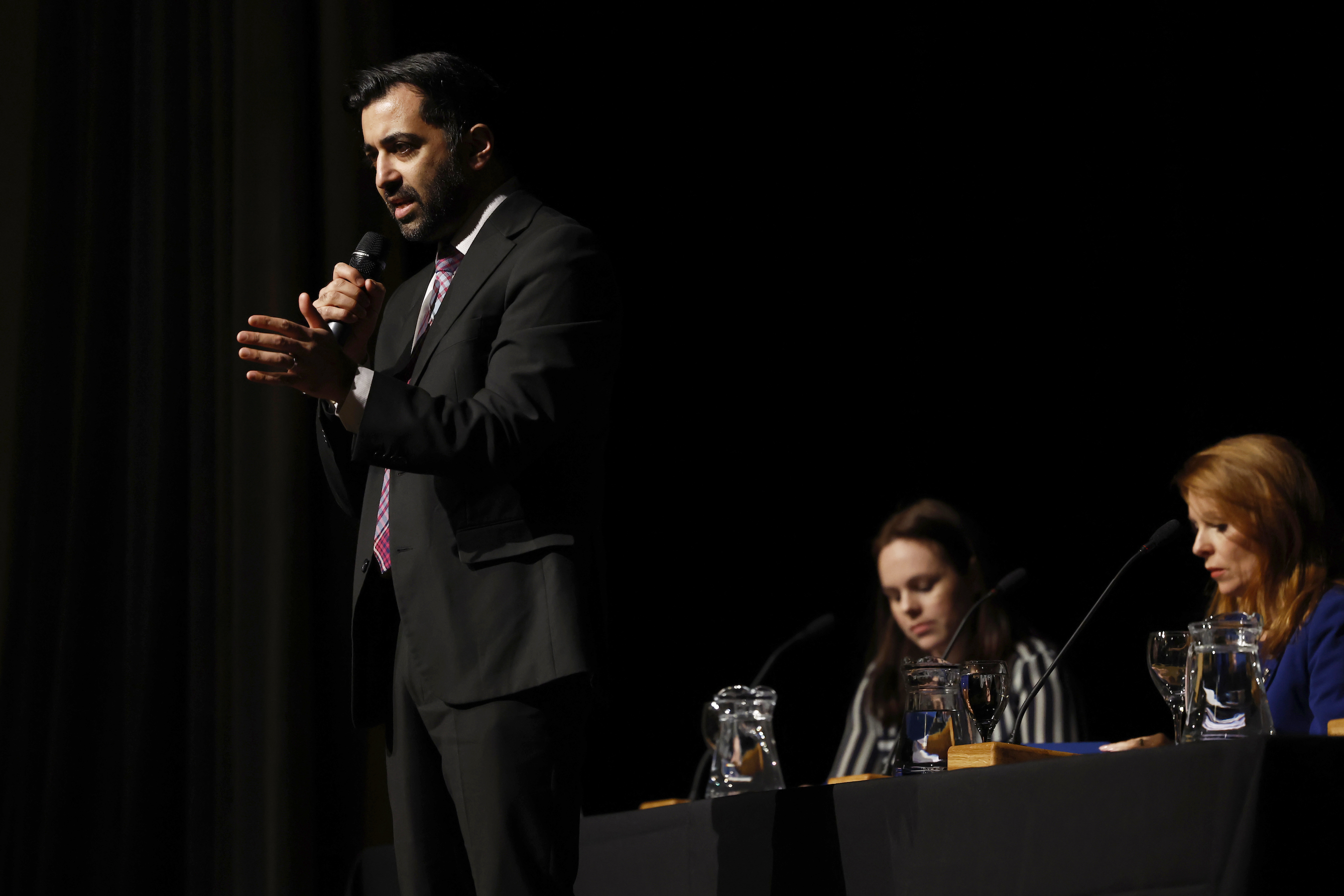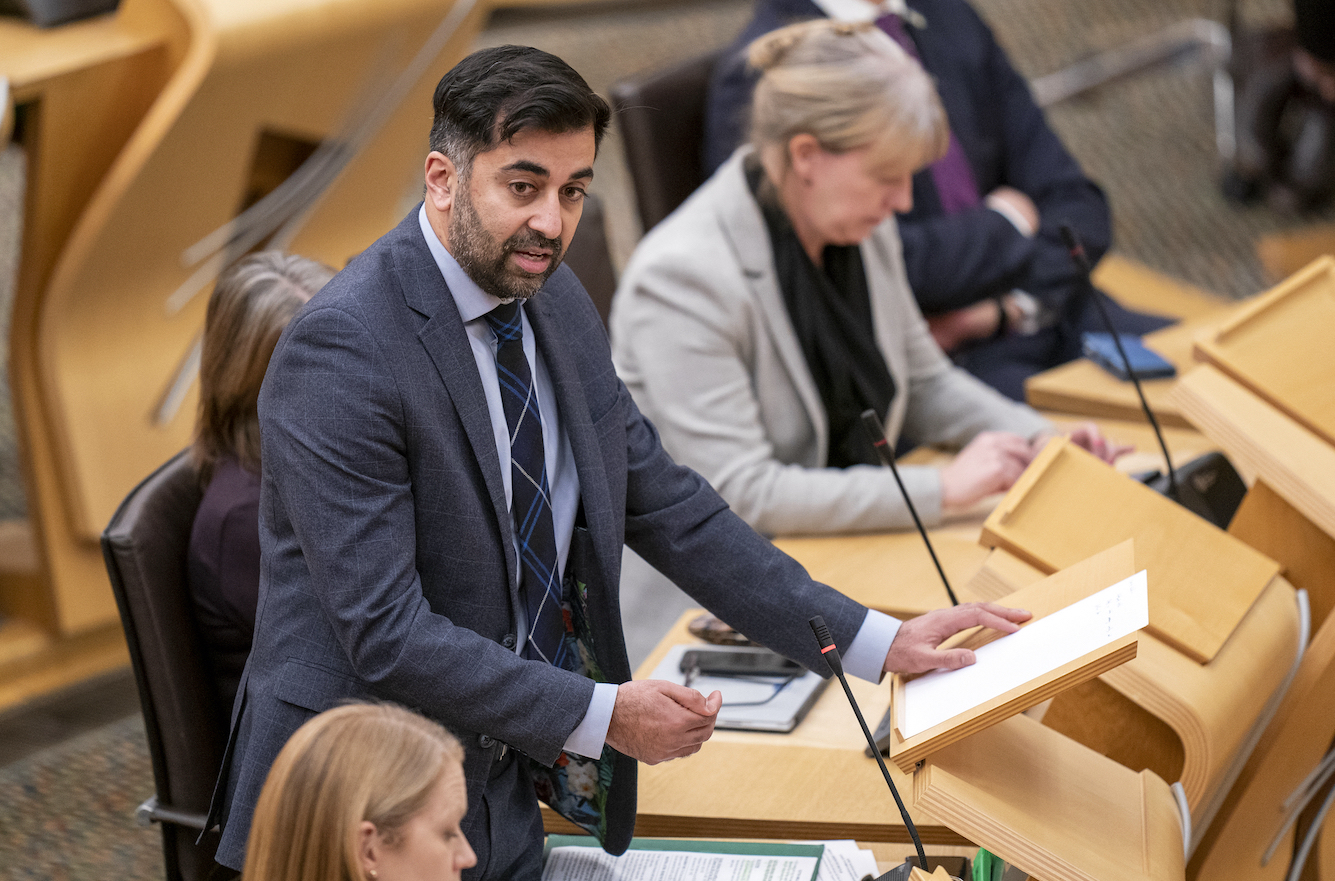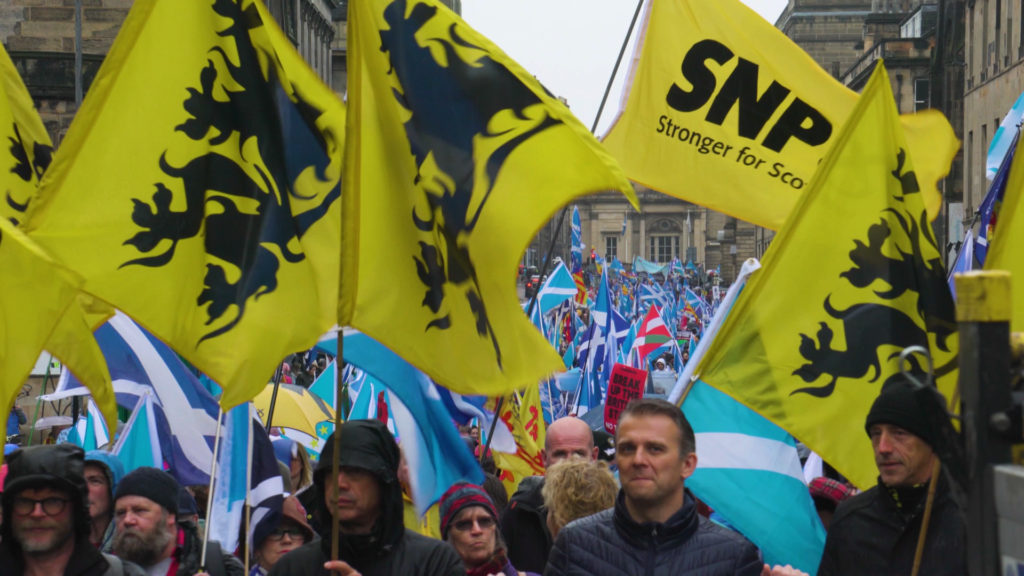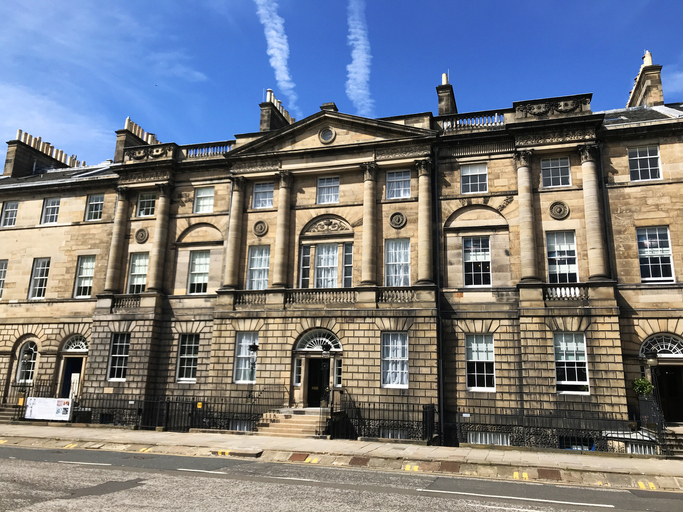Overview
Nicola Sturgeon first discovered politics during the Thatcher years, and young Nicola was politicised by a Scottish economy and society that in her words, ‘wasn’t in great shape’.
Sturgeon went on to become Scotland’s 5th First Minister and the first woman to hold the post, serving in the role between 2014 and 2023.
In 2016, Sturgeon was ranked as the 50th most powerful woman in the world by Forbes, second only to the Queen in terms of United Kingdom’s rankings.
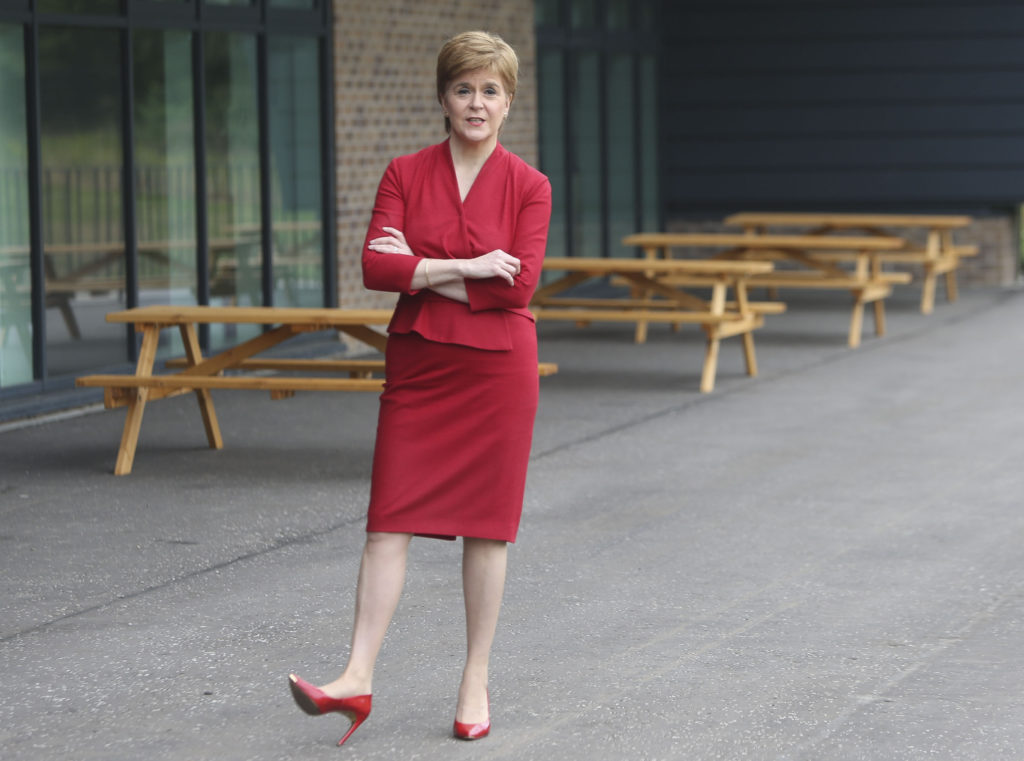
Nicola Sturgeon, SNP Leader and Scotland’s First Minister
First Minister of Scotland
Following the ‘No’ result in the 2014 Scottish Referendum, Alex Salmond resigned as First Minister and Sturgeon was elected unopposed to replace him by the SNP membership.
Sturgeon galvanised her party amidst the fallout of the 2014 referendum and the disappointment with the result. The party’s enthusiasm soon reappeared and carried over to the 2015 British General election, as the party demolished Labour’s grip North of the border, winning 56 out of the 59 seats on offer.
The election campaign was run along very personal lines; Sturgeon was seen as the SNP’s greatest asset.
At Edinburgh, Nicola Sturgeon was initially careful not to push for a second referendum, but following the 2016 Brexit vote, her publicly stated interest in another referendum grew. Scotland voted overwhelming in favour of remaining in the European Union.
Sturgeon forged a cold relationship with British Prime Minister, Theresa May, who strongly pushed back at the notion of an ‘indyref2’ for Scotland. The 2017 election saw the SNP numbers at Westminster reduced to 35, but this quickly increased to 48 in the 2019 election.
During 2020 and 2021, Nicola Sturgeon oversaw the Scottish government’s response to the coronavirus pandemic, regularly appearing at televised news conferences. Under Sturgeon, the Scottish government took a different approach, notably in terms of coronavirus restrictions, to those being followed by Prime Minister Boris Johnson’s government in England.
In 2021, Sturgeon led the Scottish National Party into the Scottish Parliament’s elections, emerging victorious with the SNP gaining 64 seats, just one short of the number needed for an overall majority. Supported by the Scottish Green Party, Sturgeon returned as First Minister.
In February 2023, Sturgeon announced she was resigning as leader of the SNP and as Scotlnd’s First Minister.
Nicola Sturgeon and Alex Salmond
In 1986, at the age of 16, Nicola Sturgeon joined the Scottish National Party (SNP) and she immediately threw herself into party activities. In 1990, Sturgeon met her mentor, Alex Salmond and supported his leadership campaign of that year.
Referring to that time, Salmond has said that Sturgeon was ‘a precocious teenage prodigy as part of my campaign, bubbling with vitality and talent’. Sturgeon has since related that Salmond believed in her long before she believed in herself. Salmond was apparently ‘certain’ that one day Sturgeon would lead the SNP.
In 2018, Alex Salmond was accused of alleged sexual harassment and the SNP began an investigation into his conduct. Although a court case was subsequently brought against Salmond, he was fully acquitted of all charges in March 2020.
The subsequent Salmond inquiry by the Scottish Parliament into the Scottish government’s handling of the affair, saw these two giants of Scottish politics collide publicly for the first time. In the wake of this scandal the Sturgeon-Salmond duopoly that had dominated Scottish politics for a decade ended; and the two are said not to have spoken since 2018.
Early Political Career
Encouraged by Salmond, and having just earned a law degree at the University of Glasgow, Nicola Sturgeon ran in Britain’s 1992 general election for the constituency of Glasgow Shettleston.
At only 21, Sturgeon was Scotland’s youngest parliamentary candidate, and ultimately unsuccessful. Undeterred by this, and a subsequent defeat at the 1997 election, Sturgeon was selected to contest a seat at Holyrood – the newly formed Scottish Parliament – for the SNP in 1999.
Following the resignation of then SNP leader John Swinney in 2004, Nicola Sturgeon announced her candidacy for the vacated position. However, upon Salmond revealing that he planned to stand for the leadership once more (he previously held the role from 1990-2000); Sturgeon withdrew.
Salmond would go on to win the leadership, and Sturgeon became his Deputy. Because Salmond did not have a seat in Scotland at Holyrood at this time, Sturgeon became the SNP’s ‘Holyrood Leader’.
In her capacity as ‘Holyrood leader’, Sturgeon changed the discourse from SNP division to SNP aspiration. And this aspiration soon turned to results. The 2007 Holyrood election saw the SNP become Holyrood’s largest party. With Salmond now an MSP and hence First Minister, Sturgeon became Deputy First Minister.
Alongside this role, Sturgeon balanced the responsibilities of being Scottish Health Secretary, for which she earned praise for her handling of the 2007 Swine Flu pandemic.
The Sturgeon – Salmond duopoly spearheaded the 2011 Holyrood SNP campaign which for the first time gave the SNP an outright majority at Holyrood. From here, a first Scottish Independence Referendum looked inevitable and it was announced for 2014.
Political Views
Sturgeon is a prominent opponent of nuclear weapons and has called for the UK’s trident programme to be scrapped. Sturgeon has said, ‘Britain’s security needs are not met by nuclear weapons’, adding they can ‘do nothing to combat the threats posed by terrorism, climate change or cyber warfare’.
A proponent of social-democratic, Keynesian economics, Sturgeon heavily criticised the austerity policies of the coalition at Westminster between 2010 and 2015. Sturgeon has called austerity, ‘morally unjustifiable and economically unsustainable’.
The SNP has placed climate change at the top of its agenda. At the 2019 SNP conference, Sturgeon herself declared a ‘climate emergency’.
Nicola Sturgeon Background
How old is Nicola Sturgeon?
Nicola Sturgeon was born on July 19, 1970.
What did Nicola Sturgeon do before politics?
In 1992, Sturgeon graduated with a law degree from the University of Glasgow. Sturgeon completed her legal traineeship at McClure Naismith, a Glaswegian solicitor’s firm.
Sturgeon then worked for Bell & Craig a firm of solicitors in Stirling. She later worked at the Drumchapel Law Centre before entering Holyrood at the 1999 election.
Nicola Sturgeon‘s Husband
Sturgeon first met her future husband, Peter Murrell, at a 1988 local SNP youth weekend which he organised. Their relationship blossomed when the couple began working together in SNP politics in 2003. There was said to be ‘great excitement’ among the SNP ranks when they were outed as an official item at the 2004 SNP conference. The couple were married on 16 July 2010. They do not have any children.
Peter Murrell became Chief Executive Officer of the Scottish National Party, holding the position between 1999 and 2023. In this role, Murrell himself became publicly embroiled in the 2020 Salmond Inquiry.
Nicola Sturgeon– Things you may not know
She reads fiction every day
Sturgeon is an avid reader; she has previously described herself as a ‘historical fiction geek’. In an interview with the Daily Record in 2012, Sturgeon showed off her impressive bookshelf.
She was into Wham and Duran Duran as a Teenager
In her interview with Desert Island Discs, Sturgeon revealed her love of ‘Duran Duran’ and ‘Wham’. ‘I’m an 80s girl at heart’, Sturgeon said.
She does not cook
In a 2012 interview with the Daily Record, Sturgeon revealed she cannot cook. ‘I don’t cook’, said Sturgeon, adding, ‘Dinner would be interesting if I was to try to cook it. I have had lots of disasters and I now prefer not to try, but Peter is a good cook and he enjoys it. I am hopeless’.
Social Media
Twitter – @NicolaSturgeon


